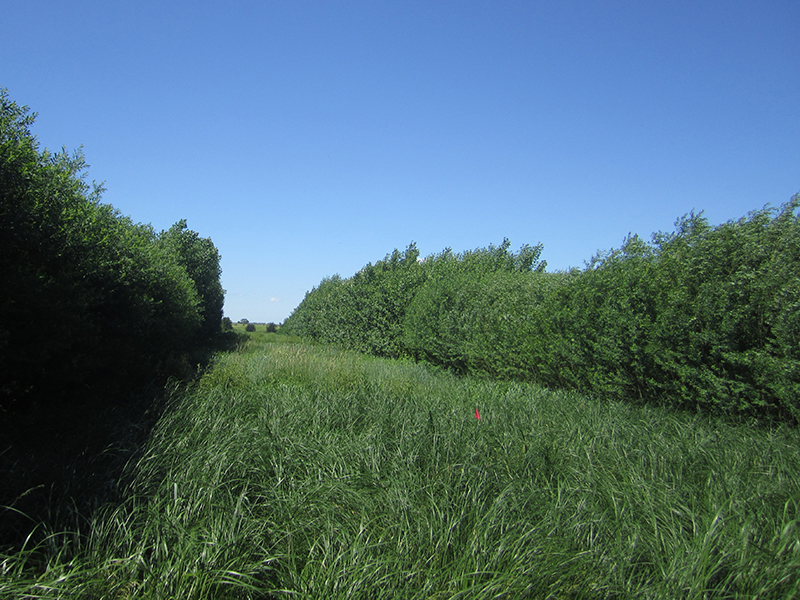October 28, 2020 – Seeing trees living alongside other vegetation is normal in nature but not something often seen in farming. However, some researchers see benefits in planting crops in between rows of trees in a practice called “alley cropping.”
The more mature, stable trees can have many benefits for the landscape. They can help fight climate change and the effects of extreme weather, as well as provide protection against processes like erosion.
In other parts of the world, research has shown that alley cropping can maximize the use of resources such as light, water and nutrients throughout the growing season. It can also result in higher yields and profits.
Research exploring alley cropping for farming in Minnesota was recently published in Agronomy Journal, a publication of the American Society of Agronomy.
“The success of alley cropping depends on understanding if and how trees and crops compete for resources and developing strategies to reduce that competition if needed,” explains Joshua Gamble, a member of the American Society of Agronomy and Soil Science Society of America. “We evaluated the impacts of alley cropping on bioenergy crop root distribution, root carbon and nutrient stocks, and changes in soil carbon.”
For the study, the research team chose two fields in Minnesota to test different tree and crop combinations. Rather than using prime farming areas for test sites, they chose sites that were floodplains or near streams.
These sites are not the most productive for traditional farming. They are often at risk for flooding, erosion and other issues that could be most helped by alley cropping.
Researchers planted trees in rows and grew grass crops in between. The team tested two tree species, hybrid poplar and shrub willow, with several species of grasses and grassland mixtures. After four years, they looked to the soil — particularly the plants’ roots — for data.
“We found that the tree roots extended up to six meters into the crop alley, which reduced the growth of crop roots, and impacted the distribution of crop root carbon and nutrients in the soil,” Gamble says. “In general, poplars were more competitive with the crops than willows. We also found small losses of soil carbon after four years.”
“Because the poplar trees were more competitive than willows, our results suggest that willows may be better suited for alley cropping in the long-term,” adds Gamble.
When looking at the competition between trees and grasses, ideally both will grow well rather than one outcompeting the other.
There are several ways farmers can help alley cropping succeed. One is to choose trees and crops with different rooting patterns. For example, a grass crop with shallow roots may pair well with trees that have deeper roots. This means they won’t compete as much for water and nutrients in the soil.
Another way to increase the chance of success with alley cropping is to choose plants that require water and nutrients at different times of the year. An example would be a tree that uses more water and nutrients in the early spring and a crop that grows mostly in the summer.
“There are many other ways to get the ideal tree and crop relationship,” Gamble says. “The goal is to make the best use of the available resources in order to maximize the overall yield or farming profits.”
The researchers say their results begin to shed light on which tree and crop pairings perform best for alley cropping with bioenergy crops. However, the current market for these systems is not very strong, so it’s not likely in the short term that these systems will be widely adopted by farmers.
“Our hope is to demonstrate that these lands could continue to provide economic income for farmers while also benefitting the environment,” Gamble says. “This isn’t a system that we would expect to see replacing grain crops on the most productive soils, however. We hope suitable sites like the ones we studied could eventually be converted to alley cropping or other perennial cropping systems.”
Joshua Gamble is a research agronomist for the United Stated Department of Agriculture. This work was supported by the United States Department of Energy, Minnesota Pollution Control Agency and the North Central Region SARE program.
